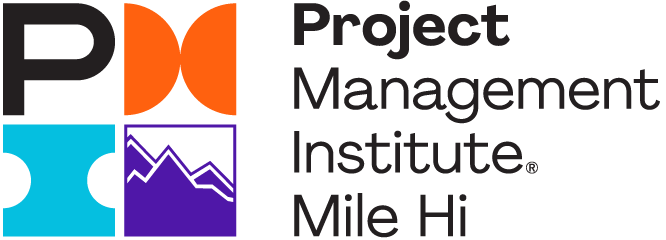07 July 2023 at 01:00PM
Lean Portfolio Management - Aligning Strategy and Execution
What’s the project success rate after diligent portfolio planning? Surprisingly, Gartner studies show a staggering 75% of all US IT projects are considered failures by those who initiated them. These studies reveal that the solutions fundamentally delivered did not align with the agreed-upon objectives. This is supported by recent research conducted by the Standish Group indicating that only around 30% of software projects are deemed successful. These are the harsh realities of our current market, and turning a blind eye to these trends is no longer an option.
In a rapidly changing landscape where customer expectations shift at the same rate as new technology advances, traditional approaches of annual prioritization and funding just won't cut it anymore. To thrive in this environment, organizations need a solution that aligns strategy and execution seamlessly on a continuous basis.
Lean Portfolio Management (LPM) holds the key to unlocking alignment and driving success in the modern business world. It goes beyond managing portfolios using a mix of lean and agile principles; With an emphasis on optimizing value delivery, embracing continuous improvement, fostering innovation, and aligning strategy with execution. Together these drive meaningful outcomes in today's rapidly changing business landscape. But what transformative changes can an organization expect from implementing LPM? Let's delve into the profound shifts that LPM introduces, including a shift in leadership mindset, enhanced visibility, a revamped cadence of reviewing delivered value, incremental funding, decentralized decision-making, and more.
Empowering Leaders:
LPM empowers leaders by providing them with crucial visibility into the work being done. It enables them to assess progress based on incremental output and gather real-time customer feedback to determine if they are heading in the right direction. This cycle of pivoting or persevering based on real data gives leaders the confidence to make informed decisions and optimize their investments for maximum value.
Decentralized Administration and Bidirectional Objective Setting:
In LPM, decisions are not made in isolation but by those closest to the action. Decentralized administration fosters a culture of autonomy and agility, allowing teams to make informed decisions. Bidirectional objective setting ensures that strategic goals and the realities of execution are in perfect harmony, allowing for adjustments and fine-tuning as needed.
The Path to Success:
Implementing LPM requires effort, discipline, and a strategic mindset, but the benefits are well worth it. Emphasizing incremental planning, value-based progress measurement, and stable, long-lived teams, LPM provides the structure and discipline needed to align strategy with execution successfully. It fosters collaboration, adaptability, and continuous improvement.
Flexibility and Agility:
LPM embraces flexibility and agility in its rhythm. Gone are the days of rigid, monolithic plans that crumble at the slightest change. LPM enables organizations to adapt to shifting market dynamics and seize emerging opportunities, keeping them one step ahead in the game.
Value-Based Progress Measurement:
To maintain momentum, LPM adopts value-based progress measurement. It's not just about counting completed tasks but about measuring the value delivered. By focusing on outcomes rather than outputs, organizations can ensure they are hitting all the right notes and achieving meaningful results.
Embracing a Culture of Experimentation:
As Jeff Bezos once said, "Our success at Amazon is a function of how many experiments we do per year, per month, per week, per day." LPM recognizes that the only failure in experimentation is the failure to learn. By promoting a culture of continuous experimentation, LPM encourages organizations to push boundaries, discover new possibilities, and drive innovation.
Structured Adoption and Continuous Improvement:
Introducing LPM to an organization requires a structured approach to ensure its successful adoption across the entire enterprise portfolio. Organizations gradually develop a lightweight review and funding process that allows them to be nimble, constantly inspecting and adapting. This iterative approach ensures that budget, resources, and time are optimized while keeping the organization on the right path. Furthermore, as LPM takes root, the organization gains insights into how it can be tailored to its unique context, leading to continuous improvements that generate value and enable strategic utilization of funds and resources.
Conclusion
Lean Portfolio Management serves as a guiding compass in an ever-changing modern business landscape. By aligning strategy with execution, it equips organizations with the tools to navigate through uncertainty and make well-informed decisions that bring tangible value to their customers. This methodology thrives on the principles of agility, adaptability, and customer-centricity, empowering businesses to stay ahead of the curve and meet the ever-evolving needs of their target market.
As the business landscape continues to evolve at an unprecedented pace, lean portfolio management will undoubtedly become a mainstream approach. It provides organizations with the means to constantly triangulate their trajectory, ensuring that they stay on course even amidst the ever-changing market dynamics. The future is beckoning, and it rewards those bold enough to question the status quo and make a change. Are you ready to embark on this transformative journey of aligning strategy with execution through the optimization of value? The choice is yours, but remember, in the face of change, survival is optional!
Helpful Links
- Lean Portfolio Management | LeanPM
- Lean Portfolio Management | Atlassian
- Lean and Innovation Complement rather than Contradict | Forbers
- Lean Portfolio Management: How to Get Started | Planview
- Lean Portfolio Management | Scaled Agile Framework
References
- Gartner: 3 Steps to Start Lean Portfolio Management
- Medium: Why Lean Portfolio Management Made our Decisions Better and Faster
- Forbes: Lean And Innovation: How The Two Complement Rather Than Contradict
- Standish Group: The Standish Group
- Forrester: Strategic Portfolio Management Is Agile | Forrester
- PMI: The Standard for Portfolio Management – Fourth Edition
- PMI: The Standard for Risk Management in Portfolios, Programs, and Projects| PMI



